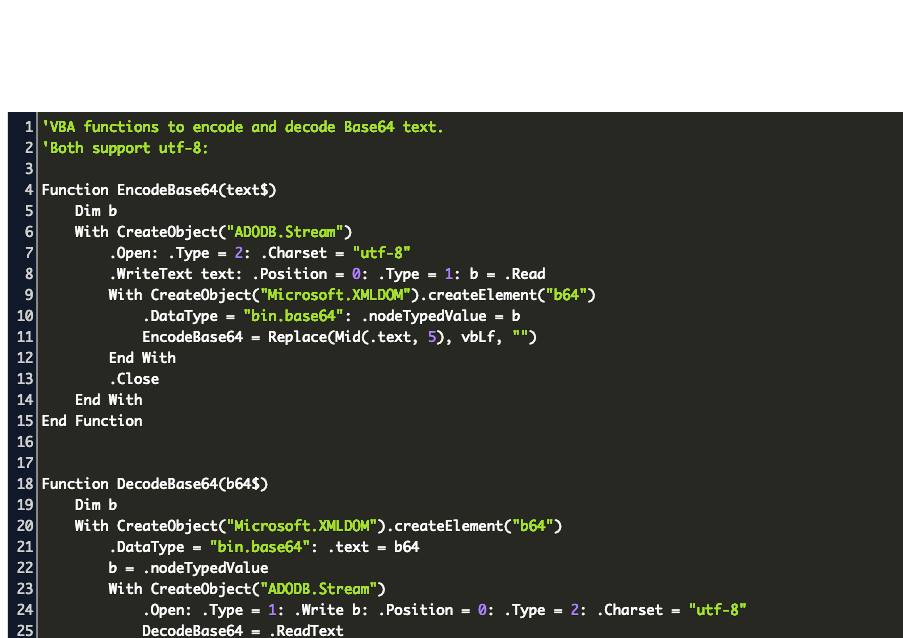

Decode each line separately (useful for when you have multiple entries). The first command encodes the string to base64. For encoded binaries (like images, documents, etc.) use the file upload form a little further down on this page. echo 'SGVsbG8gd29ybGQK' | base64 -decode Encoding fileĬreate a text file for testing: echo 'Hello world' > data.txtĮncode content of a text file and print result in the terminal: base64 data.txtĮncode content of a text file and save result in another file: base64 data.txt > out.txt Decoding fileĬreate a text file that contains Base64 encoded data: echo 'SGVsbG8gd29ybGQK' > encoded_data.txtĭecode content of a text file and print result in the terminal: base64 -decode encoded_data.txtĭecode content of a text file and save result in another file: base64 -decode encoded_data.txt > out. Decode from Base64 format Simply enter your data then push the decode button. String can be encoded as follows: echo 'Hello world' | base64 Decoding stringįor Base64 decoding use -decode option. The base64 command can be used to perform Base64 encoding and decoding.
Base64 decode linux how to#
This tutorial shows how to perform Base64 encoding and decoding in Linux. What counts, remember, is to possess a secret." ~ Umberto Eco, (Foucault's Pendulum)īase32 - Base32 encode/decode data and print to standard output.Base64 is an encoding and decoding scheme that often used to convert binary data to an printable ASCII text format, and vice versa.

"…the more things you know, or pretend to know, the more powerful you are. $ base64 -wrap=0 favicon.ico > encoded.txt Click on the URL button, Enter URL and Submit.

This tool allows loading the Base64 data URL, which loads base64 encoded text and decodes to human readable text. This tool saves your time and helps to decode base64 data. SVG directly, encoding SVG in base64 will just make the file larger.īase64 is part of the coreutils (basic file, shell and text manipulation utilities) project. Base64 Decode is very unique tool to decode base64 data to plain text. JPG data for use in HTML / CSS however data URIs can accept. Use -ignore-garbage to attempt to recover from any other non-alphabet bytes in the encoded stream.īase64 is often used to encode. When decoding, the input may contain newlines in addition to the bytes of the formal base64 alphabet. Note that b64data should be null terminated. Data are encoded and decoded to make the data. This function will decode the given encoded data, using the base64 encoding found in libsrp. To encode or decode standard input/output or any file content, Linux uses base64 encoding and decoding system. Linux base64 decode JavaScript atob() 2022. Padding at the end of the data is performed using the " =" character. Perl decodebase64() Decode a base64 string by calling the decodebase64() function. This uses an alphabet of A-Z, a-z, 0-9, +/= If you run base64 decode without a file, you can type text (or copy and paste it), hit return/enter, and then control+d / ctrl+d and it will be decoded. The data are encoded as described for the base64 alphabet in RFC 4648. The base64 encoded data is about 33% larger than the raw data. Base64 is particularly prevalent on the internet where its uses include the ability to embed image files or other binary assets inside textual assets such as HTML and CSS files.įor instance, background images and fonts can be specified in a CSS stylesheet file as data: URIs, instead of separate files. Mandatory arguments to long options are mandatory for short options too.īase64 is designed to carry data stored in binary formats across channels that only reliably support text. With no FILE, or when FILE is -, read from standard input. Base64 is a method used to encoding binary data so that it becomes printable or in short binary data is encoded into a 7-bit character format such as part of. Wrap encoded lines after COLS character (default 76). When decoding, ignore non-alphabet characters. Base64 encode/decode data and print to standard output.


 0 kommentar(er)
0 kommentar(er)
